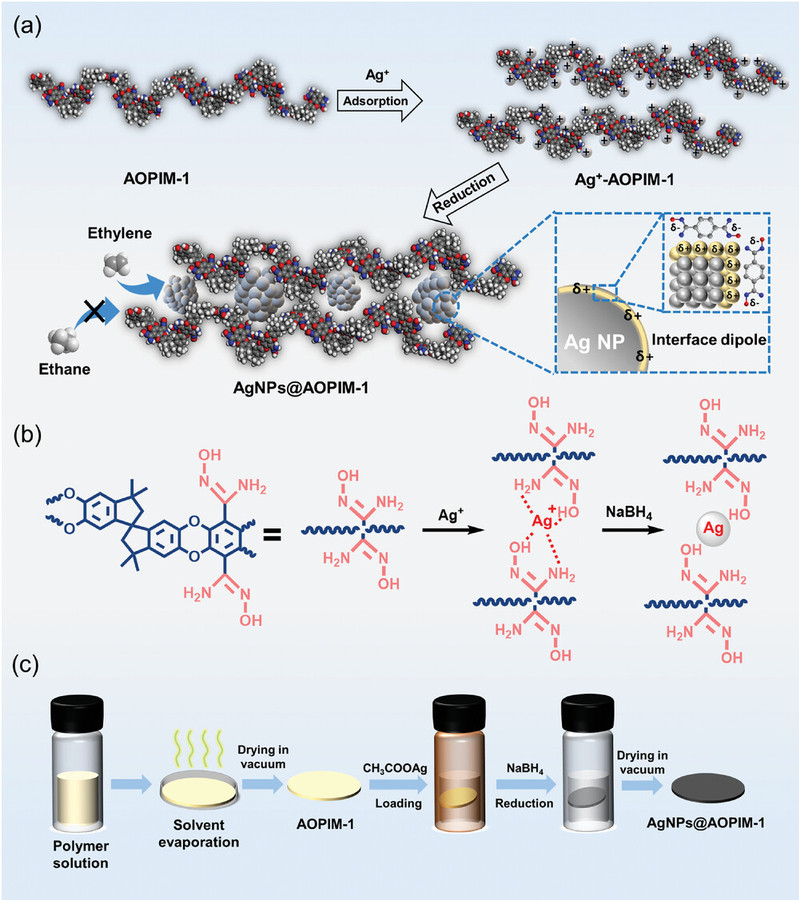Engineering Ultra-Small Ag Nanoparticles with Enhanced Activity in Microporous Polymer Membranes for C2H4/C2H6 Separation
Weikang Lai1,2, Yu Jiao1,2, Yang Liu1,2,3,4, Wangxi Fang5, Zhenggong Wang1,2,3,4(王正宫),* Michael D. Guiver6,*and Jian Jin1,2,3,4(靳健)*
1State Key Laboratory of Bioinspired Interfacial Materials Science Soochow University Suzhou 215123, China
2College of Chemistry, Chemical Engineering and Materials Science Soochow University Suzhou 215123, China
3Jiangsu Key Laboratory of Advanced Functional Polymer Materials Soochow University Suzhou 215123, China
4Jiangsu Key Laboratory of Advanced Negative Carbon Technologies Soochow University Suzhou 215123, China
5i-Lab Suzhou Institute of Nano-Tech and Nano-Bionics Chinese Academy of Sciences Suzhou215123, China
6State Key Laboratory of Engines School of Mechanical Engineering Tianjin University Tianjin30072, China
Adv. Mater. 2025, 37, 2416851
Abstract:The separation of C2H4 and C2H6 is a critical yet energy-intensive operation in the petrochemical industry. Gas separation membranes offer energy-efficient alternatives, but their effectiveness is hindered by the similar physical properties of C2H4 and C2H6. Here, a metallic nanocomposite membrane (MNM) comprising ultra-small Ag nanoparticles embedded in an amidoxime-modified polymer of intrinsic microporosity (AOPIM-1) is reported for highly efficient C2H4/C2H6 separation. The microporous structure of AOPIM-1, combined with anchoring groups (amidoxime groups) inside the microcavities, enables size-controlled growth of Ag nanoparticles with ‒≈3 nm diameter, which maximizes the contact with ethylene molecules. The amidoxime groups as electron acceptors effectively enrich the positive charge on the surface of Ag nanoparticles. The activated Ag form reversible complexes with ethylene molecules endowing them with preferential affinity over ethane. The resulting Ag nanocomposite membrane demonstrates a ≈10-fold increase in C2H4 permeability, reaching 322.1 barrer, and a ≈3-fold increase in C2H4/C2H6 selectivity, reaching 8.8. The comprehensive separation performance is superior over all the polymer membranes and mixed matrix membranes reported so far. The MNMs also demonstrate stable mixed gas separation performance under elevated feed gas pressures. This study provides valuable insights into designing and fabricating polymer membranes with high C2H4/C2H6 separation performance.

Article information: //doi.org/10.1002/adma.202416851